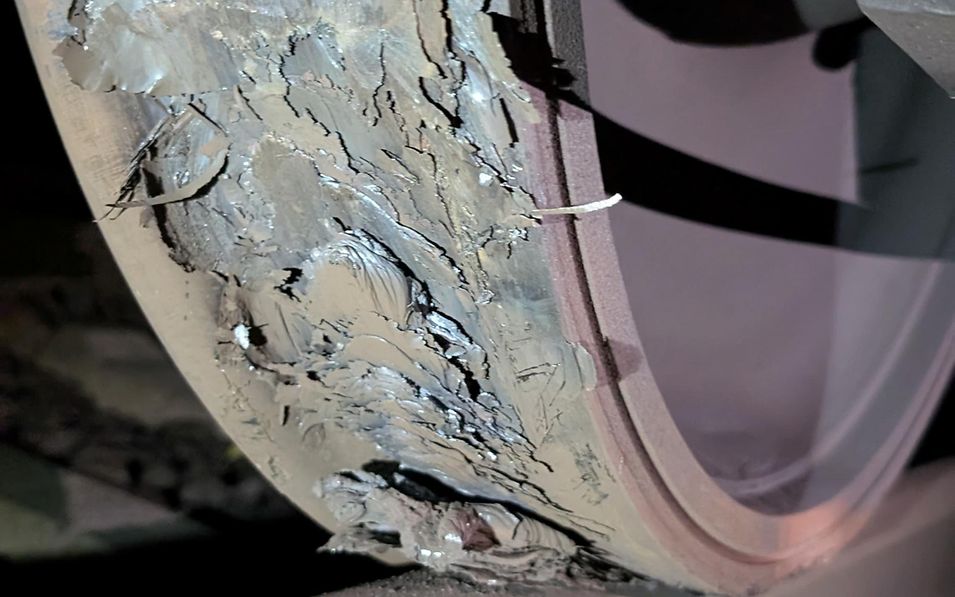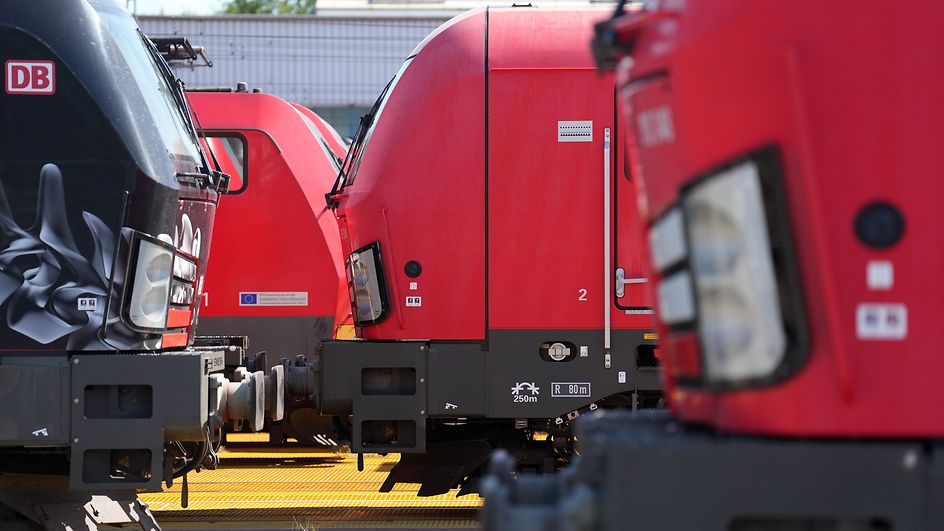Article: Expert view: Episode 3 flat spot
Every wagon inspector knows the feeling: a train is standing on the track, everything seems normal – and yet you can immediately sense that something is wrong. Today, it is a wagon with a flat spot that could throw our plans into disarray. My name is Matthias Maage, I am a wagon inspector at DB Cargo, and I will explain how we identify and resolve such operational irregularities.
The intercom lights up 'FDL Sof'."Rüdiger? Matze? Take a look out of the window."
Normally, Ute, our colleague from the signal box, informs us when the empty coal train from the VW factory arrives. Today, however, the wagon was already there before we had been notified – apparently, the train plan had been slightly delayed.
When we move the wagon slightly, we immediately feel the vibrations through the flat spot and hear the typical knocking sound on the rails. Identifying the problem so early on has decisive advantages:
- Preventing damage: bearings, wheels and rails are protected before major problems arise.
- Minimal delays: Train operations can be adjusted more quickly and the supply chain remains stable.
- Rapid cause analysis: documentation, defect reporting and repair planning start immediately, and the wagon is back in service faster.
- Efficient cooperation: wagon inspectors, dispatchers and quality inspectors work together seamlessly – a practical example of professional operational management.
What is a flat spot?
A flat spot occurs when a railway carriage wheel no longer rotates evenly, for example because the brake is blocked or the carriage has slipped on the track. The wheel rubs against the rail and forms a flattened spot. This results in strong vibrations, noise and increased wear on the wheel and rail. Flat spots can impair braking performance and must therefore be repaired immediately.
After the track has been closed and the dispatcher has been informed, I go to the carriage. The damage is clear: a defective brake equipment on the carriage. Photos are taken, the defect label is filled out, the brake is deactivated, and the carriage receives special treatment.
Then the cause analysis begins: creating a defect report, attaching photos, researching the origin and destination of the wagon, and informing all relevant parties. For our customers, such an irregularity means unavoidable delays. The wagon must first have a wheelset replaced at the factory before it can be put back into service.
My colleague Gerd, a quality inspector at DB Cargo, provides support for damaged wagons and special cases. Together, we are a well-coordinated team: I collect operational information, Gerd evaluates it and initiates measures. This has enabled us to quickly resolve many irregularities and minimise the impact on operations.
We are continuously working to improve production quality and efficiency – more insights will follow soon.
About the author
Matthias Maage is a wagon inspector in rail freight transport at DB Cargo's Seelze site. After leaving school, he discovered his passion for large machines in Australia, completed an apprenticeship as an agricultural machinery mechatronics technician and then switched to the railway sector as a career changer.
As a #Trainfluencer, he shares insights into everyday working life and inspires both experts and railway fans alike.




